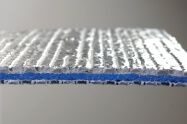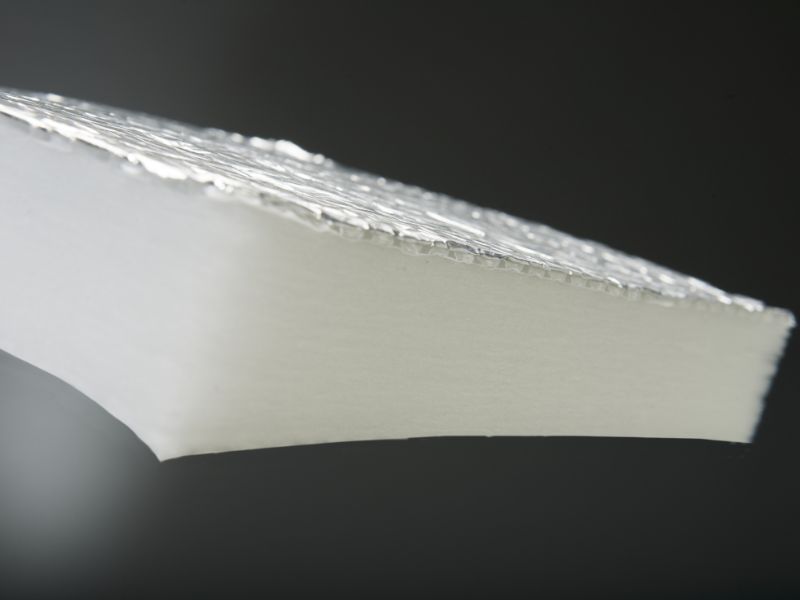The most effective way to reduce your energy consumption is to insulate
But how do you choose between the different families of insulation materials?
There are currently 3 types of insulation materials
- Rigid insulation materials in the form of polyurethane (PU, PIR) or polystyrene (XPS or EPS) panels.
- Fibrous insulation materials, often more flexible and in roll form. They are made from inorganic (glass wool, rock wool) or organic (sheep’s wool, hemp, polyester wadding, …) products.
Rigid and fibrous insulation materials trap a maximum amount of stable air.
They slow the movement of hot or cold energy, which is why they are of increasing thicknesses.
- Thin reflective insulation materials act differently.
Rather than slow the movement of energy, they act like a mirror and reflect it.
The quality and effectiveness of the insulation material are not determined by the thickness alone, but by the composition of the product and the reflective film used.
Better understand Aluthermo® thin insulation
ALUTHERMO® products help save energy by acting on all modes of heat transfer.
Conduction
- Transmission of heat from one body to another by direct contact.
- The various components of ALUTHERMO® are an eff ective restraint against conduction phenomena.
Convection
- Movement of air due to temperature difference. Warm air rises, cold air descends.
- ALUTHERMO® is totally impermeable to air.
Thermal radiation
- Transmission of heat by infrared radiation without direct contact.
- ALUTHERMO® is covered on both sides by an aluminium foil which acts as a barrier to transmissions by radiation.
Humidity
- The more humid the air, the more it conducts energy.
- ALUTHERMO® encloses dry air in its polyethylene fi lms. The protection of this fi lm by the aluminium makes it totally impermeable to moisture.
Contrary to traditional thick insulators which work principally on loss by conduction, multi-layer thin insulators, combined with two gaps of air, induces the transmission of energy by radiation rather than by conduction or convection.





